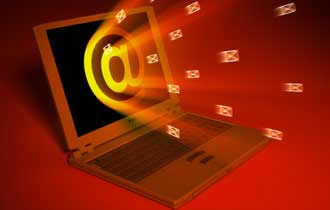Why and How You Should be Using Triggered Email, Part 3
In this article, you'll learn...
- How using triggered email up-sell and product-recommendation campaigns boost conversion
- Three ways to employ triggered-email campaigns during or after purchase
- Essentials for a trigger-based reactivation campaign

If you're just tuning into this series, Part 1 explored the difference between broadcast and triggered email, explained the role of trigger-based email, and defined some fundamental characteristics that make it so powerful.
Part 2 presented the first two of four must-have triggered-email campaigns that no email marketing program should be without: welcome and remarketing campaigns.
Here, in Part 3, we'll look at the last two of four essential triggered-email campaigns: up-sell/cross-sell and reactivation campaigns.
The Up-Sell/Cross-Sell: Are You Leaving Money on the Table?
Too many marketers think about email campaigns as single blasts rather than a progression of offers and information interwoven into a conversation designed to maximize customer lifetime value. If you're thinking in terms of "one and done" campaigns, it's time to develop an up-sell/cross-sell trigger program.

Here are three types of up-sell/cross-sell triggered-email campaigns to implement during or after the conversion process. However you define conversion, you can be sure of one thing: The subscribers who have started or completed your call to action at least once are the ones most likely to convert again.
1. Follow-On Offer
After people have downloaded your free report, viewed your webinar, accessed your online widget, or visited your Facebook page lead-capture form, do you email them? You should. If they've just taken you up on your offer of something for free, it's time to offer an entry-level product they might buy.
Or if you're not selling online, send a follow-up email requesting a way to deepen the relationship. That might mean you invite them into a series of more in-depth free information, attempt to set up a phone consult, or schedule an in-person meeting.
Enlightened e-marketing tip: Have a follow-on email auto-responder ready to go after every conversion. Don't limit follow-on campaigns to a single message; you might create a series of triggered email, known as a dialog track, to continue the relationship until you receive a positive or negative response.
2. Personalized Product Recommendations
Personalized product recommendations are proven to generate higher conversions on e-commerce sites, but they're usually seen as return Web pages to which a buyer is redirected immediately after ordering. That's a little quick for some folks, and not all will re-up again online immediately after purchase.
So, slow down the sale by using your order confirmation emails for up-sell/cross-sell recommendations. Buyers expect to receive buy confirmations by email, and they not only welcome but also open and read them.
A recent Marketing Sherpa case study of health and wellness retail company Isabella found that 19% of those who clicked a recommendation completed another purchase; it also found that recommendations in transaction emails generated a 111% higher conversion rate than weekly alert emails.
Enlightened e-marketing tip: Double-dip by not only including product recommendations in download/buy confirmation emails but also following up a week or two later to nonresponders with triggered up-sell alert emails.
3. Abandonment Follow-Up
Have an online shopping cart? Then you probably know how common it is for customers to leave items in it without completing their purchases. Abandoned-cart-triggered email programs can be a goldmine for retailers and any e-commerce-enabled business with an online shopping cart. They've been shown to recoup up to 15% of otherwise lost sales. Yet studies like this one find that less than 15% of the top e-commerce-enabled retail sites use abandoned cart email. The good news: you'll be ahead of the curve if you adopt this type of trigger now.
Enlightened e-marketing tip: Abandoned cart emails are fertile ground for testing. Test a plain-vanilla reminder vs. a reminder with a limited-time incentive or coupon for purchase. With cart abandonment rates hovering near 60%, it's worth finding out whether timing, price, or something totally unrelated to either was the primary reason for the abandonment.
(Abandoned-cart email programs are a rich topic—find out more here.)
Reactivation: Inviting Them Back
It happens to even the best email lists: A percentage of their members become disengaged over time. Maybe they were in the market when they joined, got what they needed, and are now on the fringes waiting until they're in need again. Maybe they're interested in you but the time to buy isn't right for them; they know it's coming and want to stay in touch. Maybe they're hanging in there, waiting for your juiciest seasonal offers. Or maybe they're just too lazy or busy to unsubscribe. Any of those are reasons to attempt re-engagement via a reactivation campaign.
The sole purpose of an email reactivation campaign is to get the recipient to take some sort of action—positive or negative—rather than do nothing. So, an offer in a reactivation campaign should...
- Recognize and acknowledge that the subscriber has had a prolonged period of inactivity.
- Recognize and thank the subscriber for her loyalty and attention.
- Provide a stronger incentive than the usual offers that subscribers receive; this is your opportunity to pull out that super-juicy, one-time, high-value offer you've wanted to test.
- Use exclusivity.
- Include a deadline.
- Explain what, if anything, will happen if the subscriber doesn't respond. Some reactivation campaigns take the form of re-opt-in campaigns, asking subscribers to rejoin. If you might unsub members if they don't reply, tell them so.
- Provide a mechanism for extended feedback—such as a survey, a link to email Customer Service, or an online feedback form.
The reason reactivation campaigns should be triggered campaigns is that some segment of your list will always be moving into inactive territory. Decide what your definition of inactive is (no opens in the past six months? No clicks in a continuous year?); when that trigger is tripped, send out your reactivation campaign.
* * *
Thanks for tuning into this series on triggered email. I hope it has sparked several ideas you can implement to better leverage email marketing in your mix. I'd love to hear more about your triggered email challenges in comments below, or contact me directly.

Karen Talavera runs Synchronicity Marketing (www.synchronicitymarketing.com) and writes about email, social media, and other online-marketing conversation channels on her blog, Enlightened Emarketing. Follow her on Twitter (@SyncMarketing) and Facebook for daily tips and links to emerging email and social-media marketing trends, facts, and research.





















